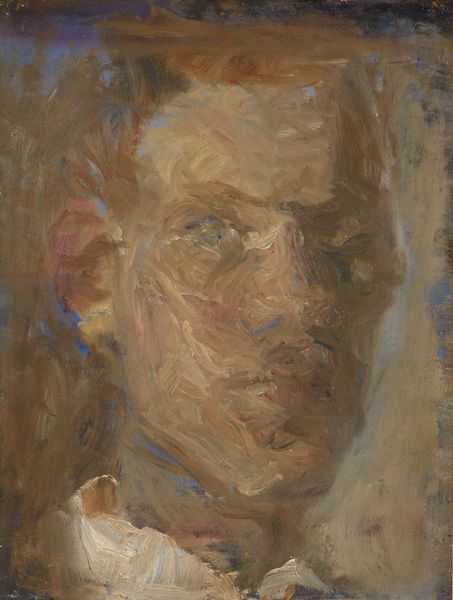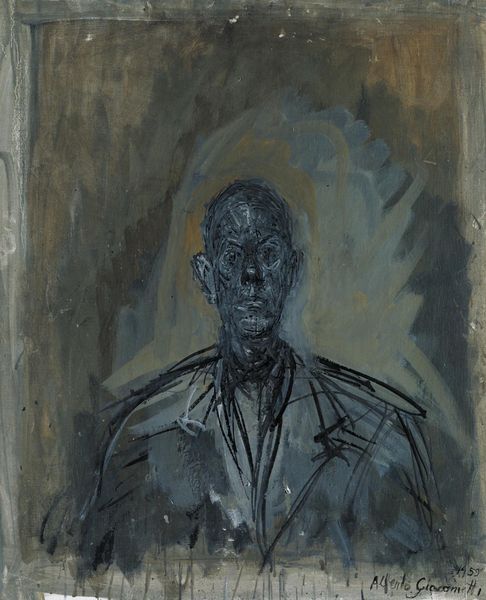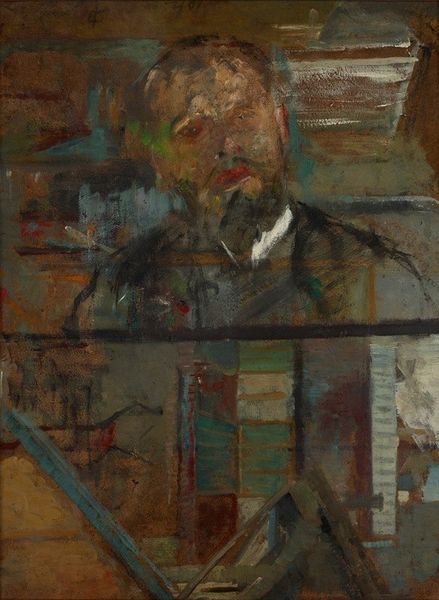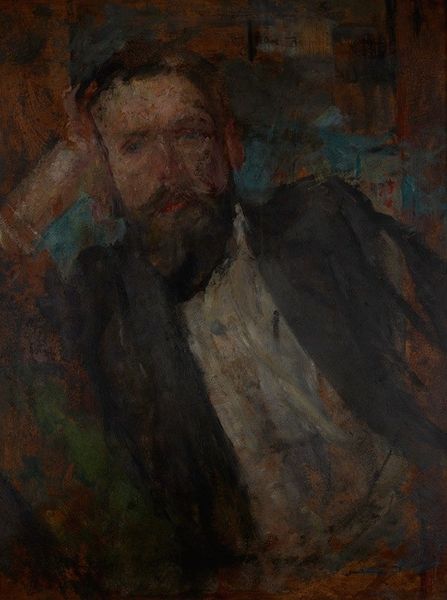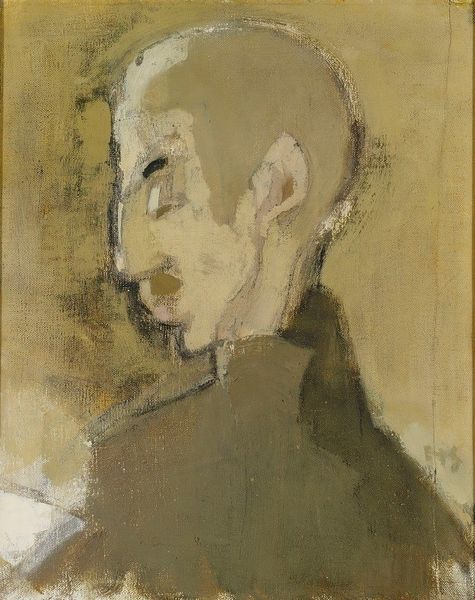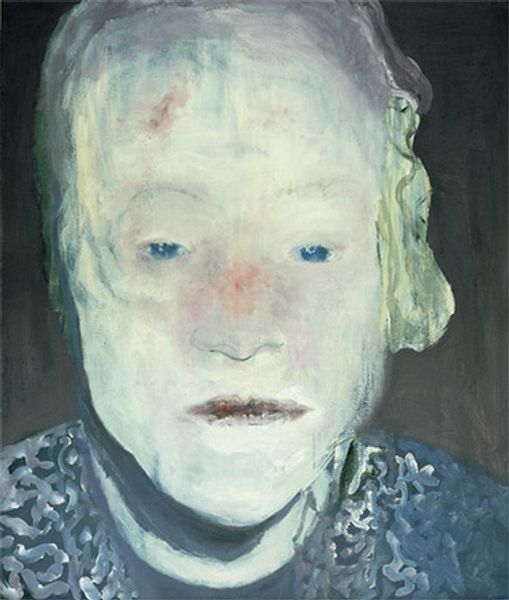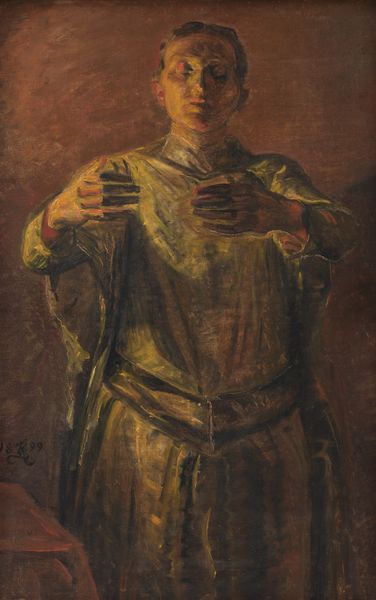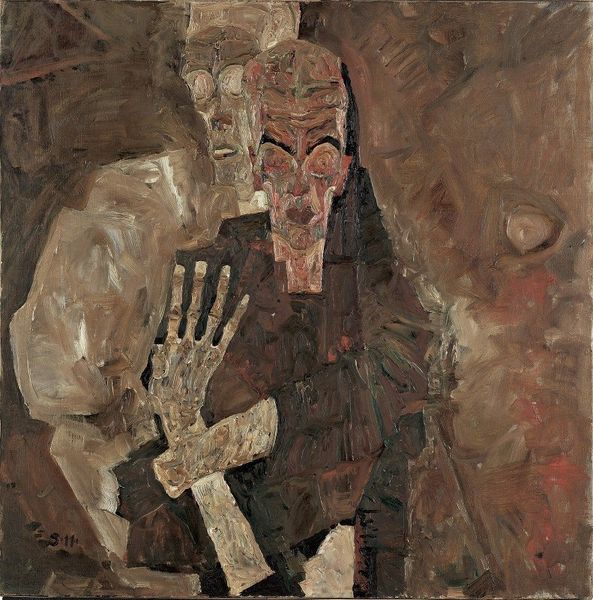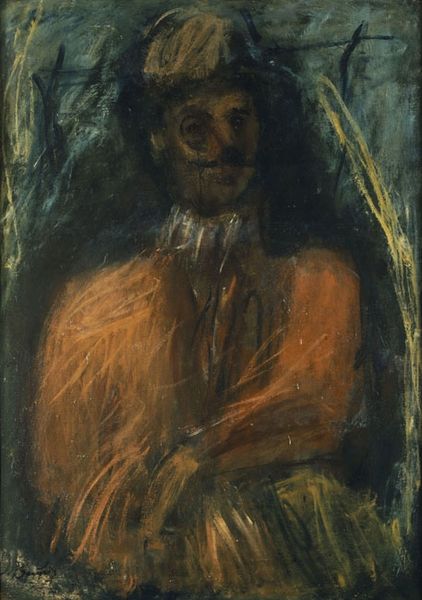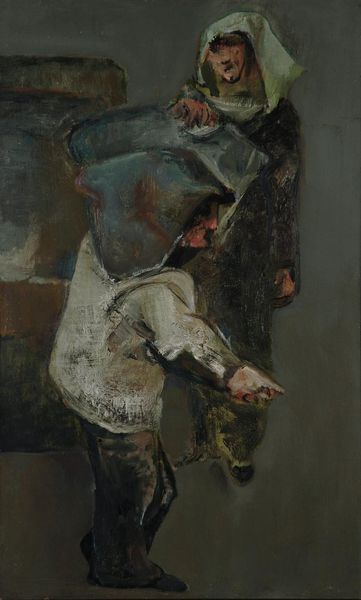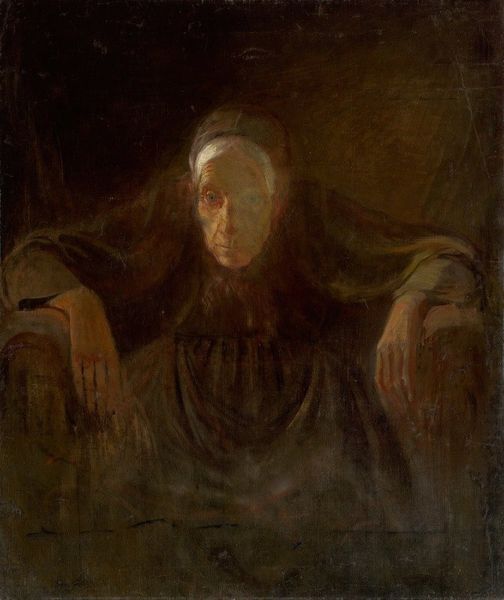
#
figurative
#
charcoal drawing
#
possibly oil pastel
#
portrait reference
#
portrait head and shoulder
#
animal drawing portrait
#
portrait drawing
#
facial portrait
#
portrait art
#
fine art portrait
#
digital portrait
Copyright: Modern Artists: Artvee
Editor: This compelling piece is titled "Mariusz Chwedczuk," artist Iwo Zaniewski. While undated, its texture suggests a medium like charcoal or possibly oil pastel. The overall impression I get is one of quiet contemplation. How do you interpret this work, especially considering its potential historical context? Curator: The image certainly invites contemplation. Portraits, historically, served very specific social functions, announcing status, commemorating individuals, and often reinforcing power structures. Here, however, while Zaniewski captures the likeness of Chwedczuk, the almost blurry application of media and the absence of clear contextual clues suggests a deliberate departure from that tradition. What social narrative do you think Zaniewski might be constructing, or perhaps deconstructing, in this portrait? Editor: It’s true, the looseness counters that sense of authority. I wonder if this style—where likeness is present but softened—could be commenting on the fleeting nature of identity in the digital age, or perhaps an artist’s struggle to capture an authentic likeness? Curator: That's insightful. The digital portrait tag is suggestive of that very concept, since the work feels unfinished like a snapshot. The ‘aura’ Walter Benjamin describes – the unique presence of a work of art – seems to be deliberately obscured here. This then, makes one ponder the politics of imagery – who is seen and how are they represented? Editor: It's amazing how a portrait that at first seemed straightforward opens up so many questions about the subject, the artist, and the viewer's role in constructing meaning. Curator: Indeed. And it is precisely by questioning its historical antecedents and considering its potential social commentary that we come to a fuller understanding of a work like this. Thank you for making such observations!
Comments
No comments
Be the first to comment and join the conversation on the ultimate creative platform.
